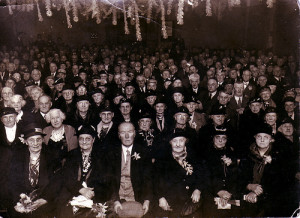“That’s not the rule anymore.”
“Says who?”
“The leading fashionistas.”
Oh, well, the leading bankers say that the laws about insider trading no longer apply, so print me a check! The leading cartels say that the laws about drug trafficking don’t apply, so load me up! The leading gangsters say that the rules about not shooting people no longer apply, so get me my Gatling gun!!
As a matter of fact, why don’t we just forget about this whole civilization thing altogether and walk around buck naked? If you see someone who looks good, knock ’em out, fry ’em up, and have a delicious afternoon snack, why don’t you!?
We have a word for people who live outside the law: criminals. And anyone who wears white pants, shoes, or dinner jackets before Memorial Day or after Labor day is a fashion criminal. Citizens of most nations have recourse to high courts and legislatures to change their laws. There is no such ruling body for seasonal fashion, no sartorial supreme court.
Ergo, the rule remains in tact. End of discussion.
